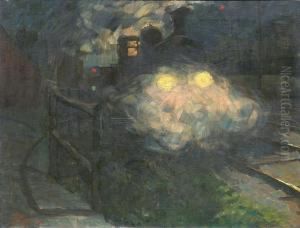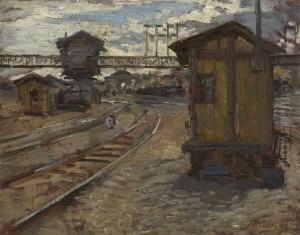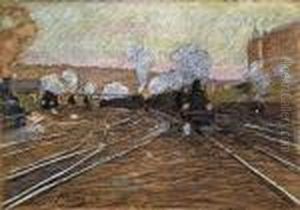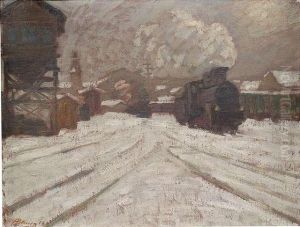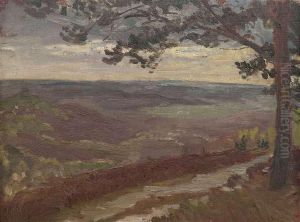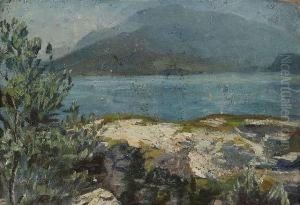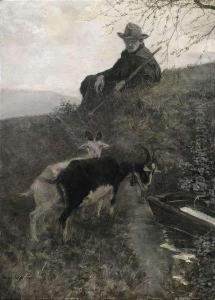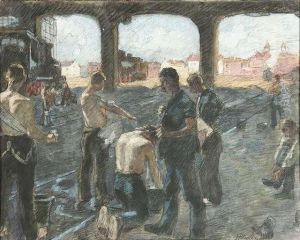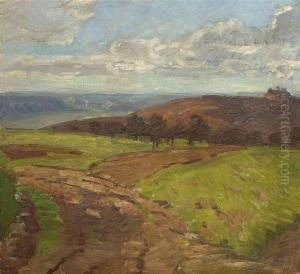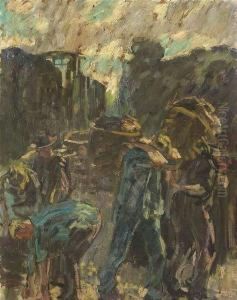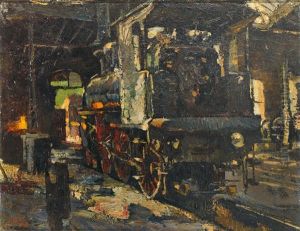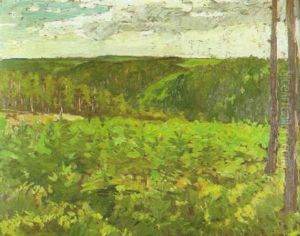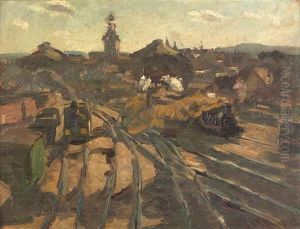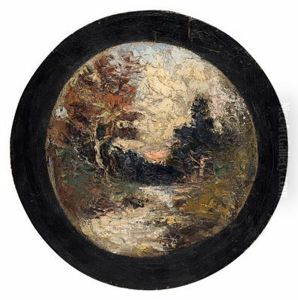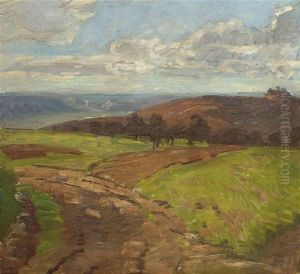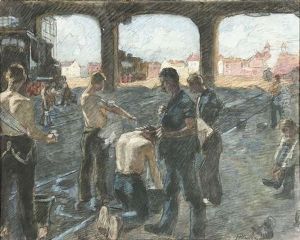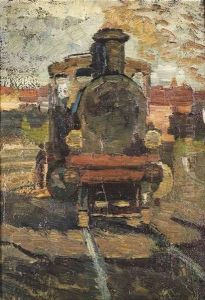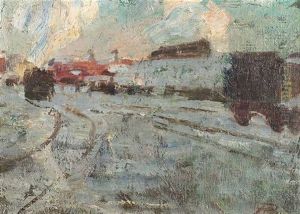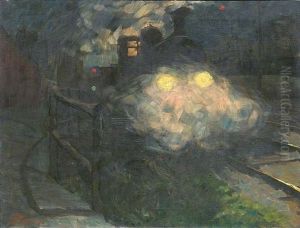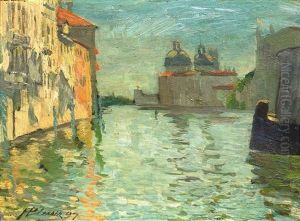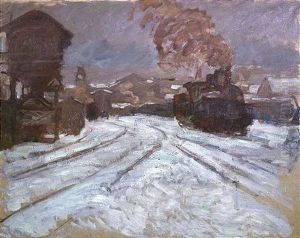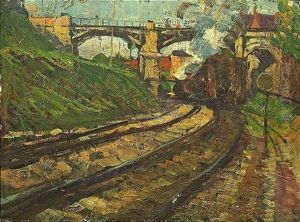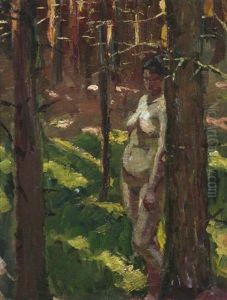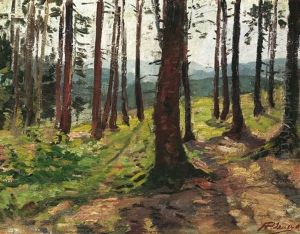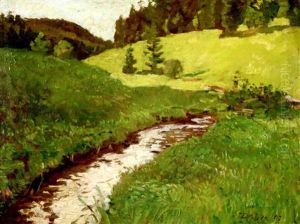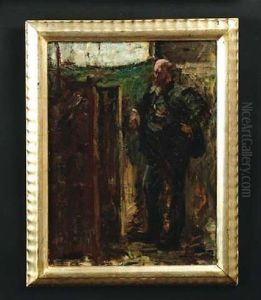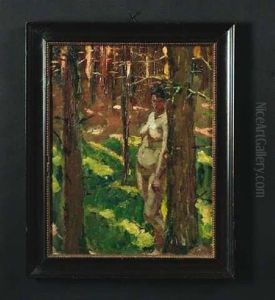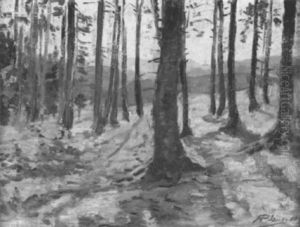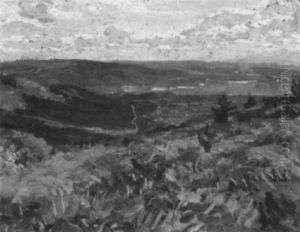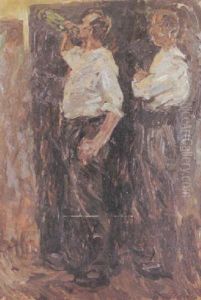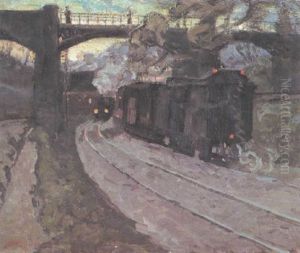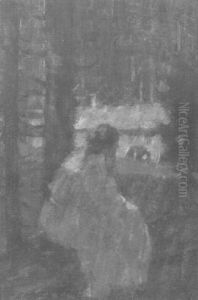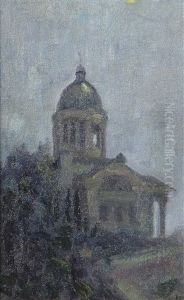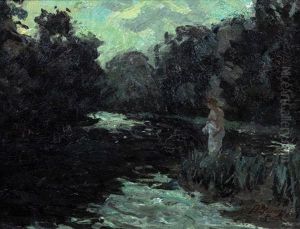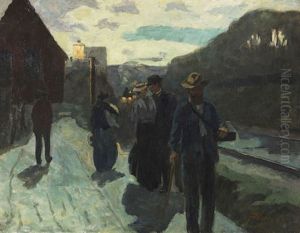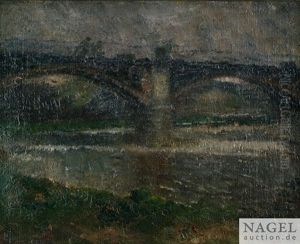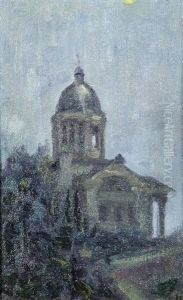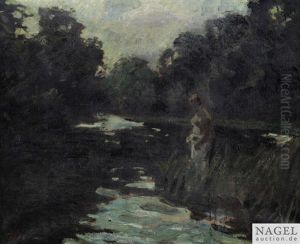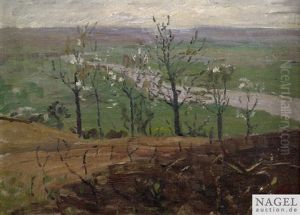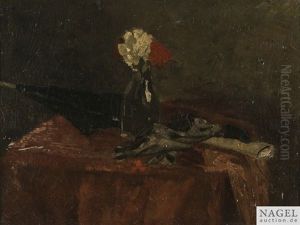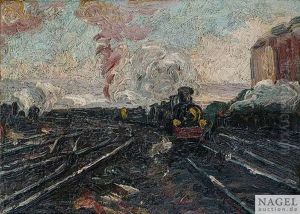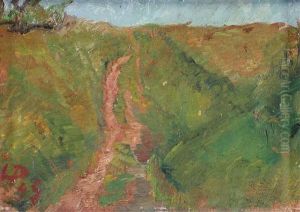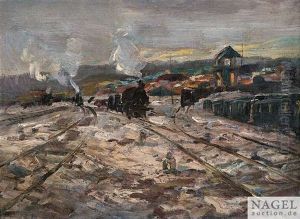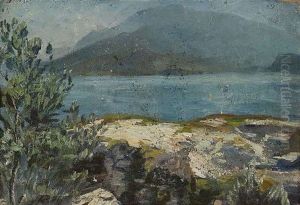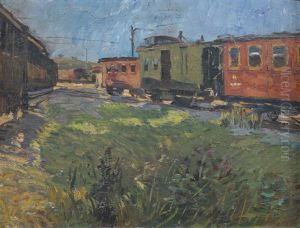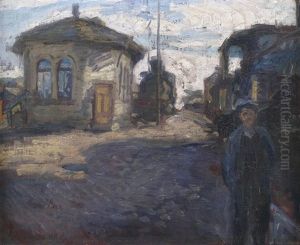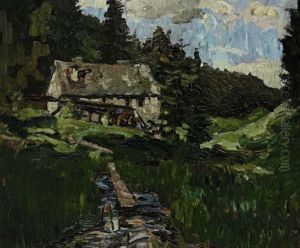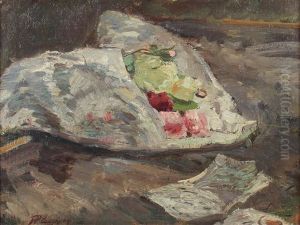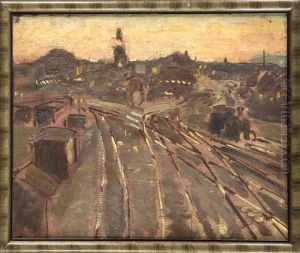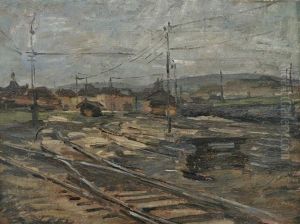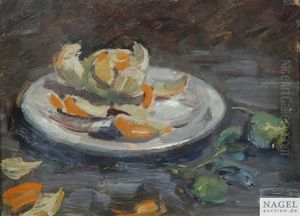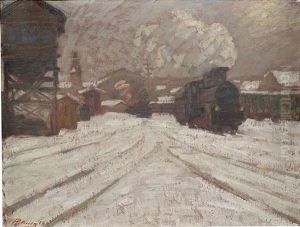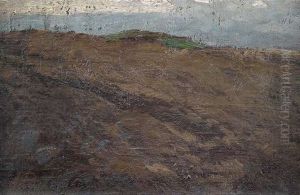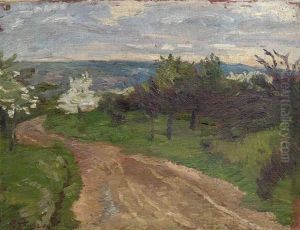Hermann Pleuer Paintings
Hermann Pleuer was a German painter, known for his impressionistic approach to depicting industrial scenes, particularly those involving the railways in Germany. Born on February 7, 1863, in Schwäbisch Gmünd, Pleuer pursued his artistic education at the Stuttgart Art School where he was influenced by his teachers Jakob Grünenwald and Heinrich von Zügel. Pleuer's work often focused on the modernization of Germany at the turn of the 20th century, capturing the dynamics and the atmosphere of the industrial era with a particular emphasis on the railways. His paintings are characterized by their attention to the effects of light and atmosphere, often portraying trains amidst vast, open landscapes or busy stations filled with steam and the hustle of commuters.
Pleuer's artistic career was marked by his ability to capture the fleeting moments of modern life, and his paintings stood out for their technical prowess and their innovative subject matter at a time when industrial themes were not commonly depicted in fine art. He became a member of the Stuttgart Secession, a group of artists who sought to break away from the academic traditions of the time and explore new avenues in art.
Despite his relatively short life, Pleuer made a significant impact on German art. His work was well-received during his lifetime, and he participated in various exhibitions. Hermann Pleuer's paintings can be found in numerous collections and museums, and they continue to be appreciated for their unique contribution to the impressionist movement, particularly in the context of industrial landscapes. Pleuer died on April 16, 1911, in Stuttgart, but his legacy lives on through his evocative depictions of the transformative power of the industrial age.
